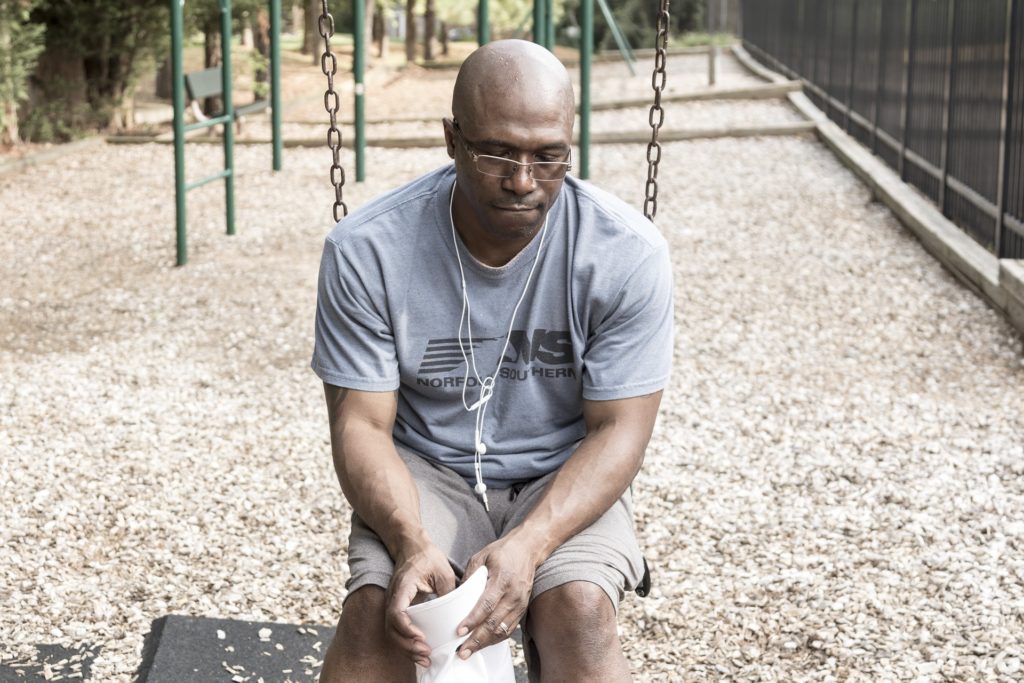
According to Addiction Medicine, approximately 1 in 10 individuals with alcohol or drug addiction receive treatment [1].
Many individuals find obtaining addiction treatment difficult due to lack of addiction treatment within their insurance plan, lack of resources in their community, facilities available may only treat the addiction or the co-occurring mental health issues, and not both simultaneously [1].
Under the prior Affordable Care Oct (ACA), members were able to receive medical care, and in 2010 the ACA was extended to members dependents up to the age of 26 [2]. Prior to the ACA, dependents were typically covered under the policyholder's coverage until the age of 19, or graduation from high school [2].
Obstacles Related to Insurance Coverage For Treatment
There are various barriers to getting treatment.
- Having insurance is not a guarantee that treatment will be covered. Not all plans cover addiction treatment and if they do access to care or coverage may be limited [1].
- If insurance covers addiction treatment, there may not be a local or accessible facility and/or provider.
- There are lack of resources for co-occurring mental health issues and addiction. Numerous facilities offer addiction treatment, but no additional diagnosis. In turn, many facilities offer treatment for mental health issues (i.e., depression or anxiety) but do not concurrently treat addiction [1]. This can be frustrating for the individual seeking treatment as they need to weight which treatment to access first.
- When able to obtain treatment, the facility may face limitations with the person’s insurance in terms of length of stay, what treatment is covered, or medications to assist in the detox, withdrawal and treatment process.
With the repeal of the ACA by President Donald Trump, could disrupt the gains that insurances have had over the past 6 years in addiction treatment coverage. Currently the ACA covers individuals below the 138% federal poverty level, and Federal and State laws provide subsidies for individuals with moderate incomes to purchase insurance plans [7].
A study conducted by Dr Rachel Lipari, that utilized data from the National Survey on Drug Use and Health (NSDUH), found that 21.7 million Americans, aged 12 and over (8%) that has a substance use disorder did not receive substance abuse treatment needed in the past year [3].
Typically, insurance covers at a substance abuse facility, 21-28 days of treatment [3]. After that individuals or families are responsible for the financial coverage of the remaining treatment, or discharge at the end of insurance coverage.
Previously prior to insurance coverage changes, substance abuse or mental health services were not required to be part of insurance plans. If they were there were strict guidelines on the amount of coverage allowed, meaning outpatient or inpatient or residential [2, 3].
Uninsured Population Needing Addiction Treatment
 Most States that have the highest opioid use are below average when looking at public funding for addiction medication treatment [4]. Even with the ACA, there are still uncovered addiction treatments within each State.
Most States that have the highest opioid use are below average when looking at public funding for addiction medication treatment [4]. Even with the ACA, there are still uncovered addiction treatments within each State.
The National Center on Addiction and Substance Abuse found that Ohio is one of 13 states that have both higher than average rates of buprenorphine use in relation to prescription opioids in treatment, and higher amounts of public Medicaid financing for treatment [4].
Once individuals are on Medicaid, addiction is treated to all other illness, requiring increased prior authorizations or coverage caps [4]. Seven states specifically excluded methadone coverage for heroin addicts, in the 2017 ACA coverage plans [4].
Also, when reviewing in the 2017 Essential Health Benefits (EHB), according to the National Center on Addiction and Substance Abuse (NCASA), insurance plans are not being reported as adequate in coverage, and the NCASA reports that 2/3rd violate the ACA [5].
Dr Lindsey Vuolo, JD, MPH with NCASA stated that individuals with addictions may not be receiving best care due to the fact that insurance plans are not covering a wide range of evidence based care [5].
In their review, she reports, that not one state covers all of the approved medications to treat opioid addiction.
According to the NCASA, The EHB report includes that 2/3 of the plan contain language that violates the ACA requirement for addiction benefits; that 18% of the plans do not comply with parity requirements; None of the plans provide comprehensive coverage for addiction by covering the full array of benefits without harmful treatment limitations; and that 88% of the plan documents lack sufficient detail to fully evaluate parity compline and/or the adequacy of addiction benefits [5].
According to John Hopkins Bloomberg School of Public Health recent research, it is imperative to find ways to get the uninsured population into services, says Dr Brendan Saloner, assistant professor in the Department of Public Health Bloomberg [7].
In this study, Saloner looked at data from the National Survey on Drug Use and Healthy, and identified 29, 962 adults from ages 18-64 with mental illness and 19, 243 with substance use disorders from 2011-2013 [7].
Results showed increases in the number of individuals with mental illness and substance use obtained insurance coverage, it did not significantly increase the use of services to treat the conditions, with substance abuse treatment showing zero change [7].
The researchers however, did find that Medicaid payment for addiction treatment rose by 7.7%, suggesting that individuals who had been paying out-of-pocket for treatment, or uninsured, were switched to the Medicaid program under the ACA [7].
According to the US Department of Health and Human Services, the ACA has resulted in 20 million individuals gaining health insurance between 2010-2016. With the repeal, the Urban Institute reports that as many as 30 million individuals could lose their insurance coverage [7].
Overcoming Insurance Related Issues For Addiction Treatment
 Additional barriers to addiction treatment are psychiatrist’s acceptance onto insurance panels, especially Medicaid.
Additional barriers to addiction treatment are psychiatrist’s acceptance onto insurance panels, especially Medicaid.
Many individuals use their primary care physician for medication management and are typically not properly referred out for more serious addiction concerns [7]. There is also a shortage of evidence based treatment programs for addiction in the United States.
Recent the 21st Century Cares Act passes, which provides funding for opioid use disorder but that will be in full effect for a few years [7].
Most insurances have coverage for addiction, there are various out of pocket costs which can be a barrier for those seeking treatment. Premiums which is the cost per month or per year that the individual pays to hold insurance.
Often these can be expensive, especially if obtained privately and not through an employer. Coinsurance payments, or coyas are the fees that are paid to the provider or for a facility it is often a copay per day.
The copay fee varies dependent on the insurance coverage, as well as specialty or degree of treating professional [6]. Many insurances now carry deductibles where the policyholder is expected to pay a fee (ranges from $2500-$6000) before coverage begins, meaning that the individual is to pay full out-of-pocket costs for treatment.
Lifetime limitations are what some insurances cap out at for treatment. Some insurances will cap out after 30 days lifetime treatment for a specific illness (addiction, eating disorder, etc.) [6].
In conclusion, there are various insurance barriers to addiction treatment. Calling the policy holders insurance plan and discussing what the options and benefits are is a good place to start in working to overcome the barriers.
 About the Author: Libby Lyons, MSW, LCSW, CEDS, is a Certified Eating Disorder Specialist (CEDS) who works with individuals and families in the area of eating disorders. Mrs. Lyons works in the metropolitan St. Louis area and has been practicing in the field for 11 years. Libby is also trained in Family Based Therapy (FBT) to work with children-young adults to treat eating disorders. Mrs. Lyons has prior experience working with the United States Air Force, Saint Louis University, Operating Officer of a Private Practice, and currently works with both Saint Louis Behavioral Medicine Institute within their Eating Disorders Program and Fontbonne University
About the Author: Libby Lyons, MSW, LCSW, CEDS, is a Certified Eating Disorder Specialist (CEDS) who works with individuals and families in the area of eating disorders. Mrs. Lyons works in the metropolitan St. Louis area and has been practicing in the field for 11 years. Libby is also trained in Family Based Therapy (FBT) to work with children-young adults to treat eating disorders. Mrs. Lyons has prior experience working with the United States Air Force, Saint Louis University, Operating Officer of a Private Practice, and currently works with both Saint Louis Behavioral Medicine Institute within their Eating Disorders Program and Fontbonne University
References:
[1]: 4 Common Barriers to Addiction Treatment. (2017, January 24). Retrieved December, 2016, from http://www.centeronaddiction.org/the-buzz-blog/4-common-barriers-addiction-treatment
[2]: (n.d.). Retrieved December, 2016, from https://www.samhsa.gov/data/sites/default/files/SR-1887/SR-1887.htm
[3]: Group, S. H. (n.d.). Beyond NIMBY: Insurance, stigma and other barriers affecting addiction treatment in California. Retrieved December, 2016, from https://www.sovhealth.com/editorials/beyond-not-in-my-backyard/beyond-nimby-insurance-stigma-barriers-affecting-addiction-treatment-california/
[4]: O'Donnell, T. D. (2016, September 24). When insurers deny treatment for drug addiction. Retrieved December, 2016, from http://www.cincinnati.com/story/news/2016/09/24/when-insurers-deny-treatment-drug-addiction/86176136/
[5]: New Report Finds That States Are Ignoring ACA Requirements To Cover Addiction Treatment. (2016, July 13). Retrieved December, 2016, from http://www.centeronaddiction.org/newsroom/press-releases/new-report-finds-states-are-ignoring-aca-requirements-cover-addiction
[6]: Insurance Coverage for Alcoholism. (n.d.). Retrieved December, 2016, from http://americanaddictioncenters.org/alcohol-rehab/insurance-coverage/
[7]: More with mental illness, substance use disorders have health insurance. (2017, January 17). Retrieved December, 2016, from https://www.sciencedaily.com/releases/2017/01/170117102157.htm
The opinions and views of our guest contributors are shared to provide a broad perspective of addictions. These are not necessarily the views of Addiction Hope, but an effort to offer discussion of various issues by different concerned individuals.
We at Addiction Hope understand that addictions result from a combination of environmental and genetic factors. If you or a loved one are suffering from an addiction, please know that there is hope for you, and seek immediate professional help.
Reviewed By: Jacquelyn Ekern, MS, LPC on March 7, 2017.
Published on AddictionHope.com
